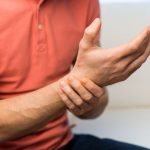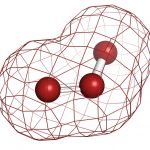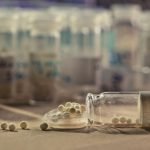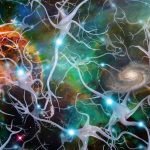Neural Prolotherapy: Safe, Inexpensive, and Effective
Bryan Rade, ND
As primary care physicians, we frequently treat patients experiencing acute or chronic pain. While some patients specifically seek naturopathic care for such symptoms, pain is often listed as a secondary concern that is managed by massage, chiropractic care, or the like. Physicians have a plethora of tools to draw on for pain management, from acupuncture to structural adjustments to oral remedies. In many cases, these therapies are highly effective and can lead to permanent resolution of pain. But what is the physician to do if those approaches do not provide a lasting benefit or any benefit at all? What is your first step when a new patient with chronic pain enters your practice and tells you she has already tried such modalities without success? In my practice, neural prolotherapy (NPT) has provided a reliable solution to such dilemmas.
Neural prolotherapy was developed by John Lyftogt, MD, an accomplished neurotherapist and prolotherapist. While treating his own musculoskeletal pain on a particular occasion, he serendipitously found significant and immediate pain relief when he administered 5% dextrose solution in the subcutaneous tissue of the affected region. After reproducing similar results in himself and later on in difficult patient cases, he began to search for an explanation as to why he was seeing positive results.
What Does NPT Address?
Drawing on work by Hackett et al1 and Marshall,2 Lyftogt determined that he was dealing with pain caused by “neurogenic inflammation,” inflammation (and subsequent pain) caused by a nerve imbalance. This imbalance seems to be related to the levels of peptide hormones (collectively known as the peptidergic system) of nociceptive C fibers. The peptidergic system is present throughout the body3,4 and releases hormones that can stimulate pain and inflammation (eg, substance P and calcitonin gene–related peptide) or anti-inflammation and healing (eg, somatostatin and galanin). If these hormones fall out of balance, pain will result (acute or chronic). The catalyst for such peptidergic disruption may be due to a chronic constriction injury, a known cause of chronic pain.5 Chronic constriction injuries occur when excess pressure is placed on a nerve (eg, due to a hypertonic muscle, a subluxated skeletal structure, an ossified foramen, etc), which disrupts its axonal transport. Indeed, it has been found that a mere 30–mm Hg pressure is required to stop normal function6 (recall that
4 mm Hg is required to blanch a fingernail).
Why Is Dextrose an Effective Analgesic?
Lyftogt hypothesized that dextrose reduces and resolves pain by inhibiting a proton channel known as TRPV1, an established capsaicin and vanilloid pain channel7 that is overexpressed on heat activation and in silent C fibers. When TRPV1 is active, it stimulates the release of substance P and calcitonin gene–related peptide, leading to pain and inflammation.7 By (presumably) inhibiting TRPV1 channels with dextrose, substance P and calcitonin gene–related peptide release is halted, and anti-inflammatory peptide hormones like somatostatin and galanin can be released. In clinical practice, this typically translates into an immediate reduction (or elimination) of pain and stimulates tissue healing over time.
What Does NPT Look Like in Practice?
Neural prolotherapy involves the administration of 5% dextrose solution (0.5-5.0 mL) subcutaneously with a 27G half-inch needle at superficial tender points along cutaneous nerve pathways innervating an affected painful site. By infiltrating cutaneous nerves, a reflexive signal is sent to the deeper nerves in the area, which leads to the analgesic and healing effects. Once all tender points have been injected, the patient is asked to identify any areas of residual pain; he points to specific sites that still hurt, and those are infused as well. In most cases, patients report significant pain reduction (20%-50% on average) by the time the procedure is completed. Although some insertion points will sting, patients typically report minimal discomfort with the procedure and will frequently encourage the clinician to address several “fine tuning” points by the end of the procedure.
How Many Treatments Are Required?
On average, 6 to 8 treatments are needed for pain resolution. In my experience, some cases resolve with 2 treatments, while others need a dozen or more. With each treatment, the acute analgesic effects last for a progressively longer time, 4 to 24 hours for the first treatment, 2 to 4 days for the second, 5 to 7 days for the third, and so on. When acute pain relief abates, it is typically not to the baseline level; net improvement from one treatment to the next is approximately 10% (ie, acute analgesia abates, but the patient does not return to the level of pretreatment pain).
What Conditions Does NPT Treat in Practice?
Lyftogt compiled years of data from treating different musculoskeletal conditions with NPT. He separated these into “recoverograms,” which list his average rates of success and levels of improvement for given conditions. In my practice, I have found that NPT is indicated as a primary treatment for any nervous or musculoskeletal cause of pain. It has been used with great success to resolve acute or chronic cases of the following: rotator cuff injuries, knee pain, neck pain, back pain (discogenic or nondiscogenic), sciatica, chronic regional pain syndrome, reflex sympathetic dystrophy, neuroma pain, arthritic pain (osteoarthritis, rheumatoid arthritis, and reactive arthritis), weak or unstable joints, and neuralgia. Lyftogt and other prolotherapists with whom I have corresponded have stated that NPT is indicated (and of similar efficacy) for conditions treated by traditional prolotherapy.
Toxicity and Adverse Effects
Dextrose is sourced from corn; therefore, severe allergy to corn is a theoretical contraindication. Because dextrose is present in all tissues in the human body, it is well tolerated, and no toxic effects have been reported to date. Possible adverse effects include bruising at some sites (common), mild pain (common, as discussed herein), acute moderate burning pain (very rare), or transient irritation of tissues (rare). In my experience, patients who report burning pain with each injection are usually best treated with a different modality (an exception is patients with chronic regional pain syndrome, who should have a reduced reaction as overall pain resolves). Rarely, patients will deviate from the normal treatment response and will experience tissue irritation for up to 24 hours before noting symptom improvement.
An Invaluable Asset for Resolving Pain
Neural prolotherapy is an invaluable asset for any primary care physician with an interest in treating and resolving pain. Often, we must tell our patients that it took years to develop a condition, so it will possibly take considerable time to resolve it. With NPT, this does not have to be the case; patients and clinicians are greatly encouraged by immediate results. Dextrose is inexpensive (approximately $5/L), making it a highly accessible treatment for patients. Physicians are fully qualified and equipped to use this cutting-edge therapy, which can be the missing solution for challenging cases.
Case Studies
Case Study 1
GL, a 40-year-old woman, reported chronic neck pain of 10 years’ duration, scored as 7 on a 10-point visual analog scale for pain (VAS) and as 9 with neck rotation. Transient symptom amelioration was reported with past massage. Neural prolotherapy was decided on, and indicated branches of the posterior supraclavicular nerve were treated. GL was an excellent responder and reported a pain level of 2 on the VAS by the end of her first visit and no aggravation with neck rotation. One week later, the pain level was reported as 4, and NPT reduced it to 1. The patient returned 1 month later for a “booster” when her neck was aggravated by excessive driving, and she returned 2 months later for the same reason.
Case Study 2
RG, a 45-year-old man, had bilateral knee pain (scored as 6 on the VAS), with “locking” on knee extension. Neural prolotherapy was initiated, and cutaneous branches of the anterior, lateral, and medial femoral nerves were treated bilaterally. The pain level was reduced to 2 on the VAS in the office with the first treatment, and 100% range of motion was recovered. In total, 4 treatments were performed, each 1 week apart; all symptoms abated and have remained so for 8 months to date.
Case Study 3
SS, a 42-year-old woman, reported upper back pain (scored as 5 on the VAS). Neural prolotherapy was conducted along the scapular branch of the posterior supraclavicular nerve. The patient reported intense burning pain with the first several points injected. Neural prolotherapy was abandoned, and her symptoms were successfully treated with subcutaneous ozone therapy (prolozone) instead.
Case Study 4
KW, a 40-year-old man, was experiencing reflex sympathetic dystrophy of the right foot (edema, burning pain requiring codeine, and an inability to put pressure on the foot). Symptoms had been progressing for 2 weeks, with no signs of improvement while awaiting a surgical consultation. Neural prolotherapy was decided on, and cutaneous branches of the tibial and peroneal nerves were treated, as well as painful points on the foot. The patient reported a significant reduction of burning pain in the office after the initial treatment and an improved ability of the foot to bear weight. KW returned 3 days later with significant pain amelioration in the right foot (reporting reduced codeine use) and the appearance of mild symptoms in the left foot. Neural prolotherapy was performed bilaterally as per the initial treatment, with similar improvements. Three days later, the patient reported no swelling or pain, with gradual return of function.
 Bryan Rade, ND is a graduate of the Canadian College of Naturopathic Medicine, in Toronto, Ontario. He has an eclectic family practice in the Halifax, Nova Scotia, area and can be contacted via [email protected] or www.bryanradend.com.
Bryan Rade, ND is a graduate of the Canadian College of Naturopathic Medicine, in Toronto, Ontario. He has an eclectic family practice in the Halifax, Nova Scotia, area and can be contacted via [email protected] or www.bryanradend.com.
References
Hackett GS, Huang TC, Raftery A. Prolotherapy for headache. Headache. 1962;2:20-28.
Marshall J. Bradshaw Lecture on nerve stretching for the relief or cure of pain. Br Med J. 1883;2(1198):1173-1179.
Kruger L, Silverman JD, Mantyh PW, Sternini C, Brecha NC. Peripheral patterns of calcitonin-gene–related peptide general somatic sensory innervation: cutaneous and deep terminations. J Comp Neurol. 1989;280(2):291-302.
Ma W, Chabot JG, Powell KJ, Jhamandas K, Dickerson IM, Quirion R. Localization and modulation of calcitonin gene–related peptide-receptor component protein-immunoreactive cells in the rat central and peripheral nervous systems. Neuroscience. 2003;120(3):677-694.
Bennett GJ, Xie YK. A peripheral mononeuropathy in rat that produces disorders of pain sensation like those seen in man. Pain. 1988;33(1):87-107.
Zochodne DW. Neurobiology of Peripheral Nerve Regeneration. Cambridge, England: Cambridge University Press; 2008:22.
Caterina MJ, Schumacher MA, Tominaga M, et al. The capsaicin receptor: a heat-activated ion channel in the pain pathway. Nature. 1997;389:816-824.










